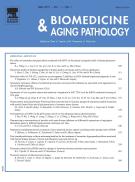The association between human B-1 cell frequency and aging: From cord blood to the elderly - 06/04/13

 , Mohammad Ebrahim Jafari b, Mohammad Javad Rasaee c, Zohreh Vahedian Dargahi d
, Mohammad Ebrahim Jafari b, Mohammad Javad Rasaee c, Zohreh Vahedian Dargahi dAbstract |
Background |
B-1 cells play a crucial role in innate immune responses and also in the pathogenesis of autoimmune diseases. Aging has long been reported to affect different arms of the immune system. Nevertheless, data regarding the potential association between B-1 cell frequency and age is still scarce. Hence, the present study was aimed at determining the percentage of B-1 cells in blood samples of different Iranian age groups.
Materials and methods |
Blood samples were obtained from seven separate groups with respect to age and were assessed for the percentage of B-1 cells using flowcytometry. Furthermore, the correlation between B-1 frequency and aging was evaluated.
Results |
B-1 cell frequency was significantly higher in cord blood and blood samples obtained from under one-year-old infants compared with other groups. Under one-year-old infants possessed the highest levels of B-1 cells in their peripheral blood. Furthermore, B-1 cell percentage diminished with advancing age.
Conclusion |
Taken together, this study showed that the percentage of B-1 cells in the human blood varies at different age intervals. Moreover, aging inversely affected B-1cell frequency so that the blood samples from the elderly contained the lowest number of B-1 cells which could result in a more susceptibility to certain diseases. A better understanding of age-dependent impacts on human B-1 cell frequency would shed new light on the exact role these cells play in human diseases.
Le texte complet de cet article est disponible en PDF.Keywords : B-1 cell, Flowcytometry, Aging
Plan
Vol 3 - N° 1
P. 20-22 - janvier 2013 Retour au numéroBienvenue sur EM-consulte, la référence des professionnels de santé.
L’accès au texte intégral de cet article nécessite un abonnement.
Déjà abonné à cette revue ?

